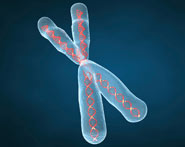


 النبات
النبات
 الحيوان
الحيوان
 الأحياء المجهرية
الأحياء المجهرية
 علم الأمراض
علم الأمراض
 التقانة الإحيائية
التقانة الإحيائية
 التقنية الحيوية المكروبية
التقنية الحيوية المكروبية
 التقنية الحياتية النانوية
التقنية الحياتية النانوية
 علم الأجنة
علم الأجنة
 الأحياء الجزيئي
الأحياء الجزيئي
 علم وظائف الأعضاء
علم وظائف الأعضاء
 الغدد
الغدد
 المضادات الحيوية
المضادات الحيوية|
Read More
Date: 7-6-2021
Date: 4-5-2021
Date: 2025-01-27
|
Pulse Field Gel Electrophoresis (PFGE)
PFGE uses rare-cutting restriction enzymes to fragment the entire bacterial genome into large DNA fragments, which are subsequently embedded in agarose plugs and placed in wells of the electrophoresis gel where they become part of the gel. The large DNA fragments are separated in the agarose gel by alternate pulses of perpendicularly oriented electric fields. Following electrophoresis and ethidium bromide staining of the gel, characteristic DNA fragment patterns can be visualised under UV light (Figure ). The principle of PFGE is that large DNA fragments require more time to reverse direction in an electric field than do small DNA fragments and thus are more retarded in the agarose gel. By alternating the direction of the electric current during gel electrophoresis, it is possible to resolve DNA fragments of 100–1000 kilobases. PFGE has been used extensively for typing of bacterial species and is often considered to be the ‘gold standard’ of genomic typing methods. DNA degradation may represent a problem.

Figure : Schematics of pulse field electrophoresis. Restriction enzyme-digested DNA is loaded into wells and separated in the agarose gel by electric fields that alternate between the poles every 90 s for 24 h. UV illumination visualises DNA with intercalating ethidium bromide. Different samples have been loaded in wells 1–4 and a size marker in the rightmost lane.



|
|
|
|
التوتر والسرطان.. علماء يحذرون من "صلة خطيرة"
|
|
|
|
|
|
|
مرآة السيارة: مدى دقة عكسها للصورة الصحيحة
|
|
|
|
|
|
|
نحو شراكة وطنية متكاملة.. الأمين العام للعتبة الحسينية يبحث مع وكيل وزارة الخارجية آفاق التعاون المؤسسي
|
|
|